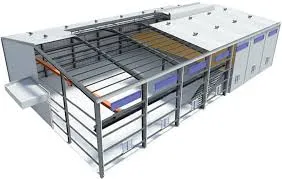- Afrikaans
- Albanian
- Amharic
- Arabic
- Armenian
- Azerbaijani
- Basque
- Belarusian
- Bengali
- Bosnian
- Bulgarian
- Catalan
- Cebuano
- Corsican
- Croatian
- Czech
- Danish
- Dutch
- English
- Esperanto
- Estonian
- Finnish
- French
- Frisian
- Galician
- Georgian
- German
- Greek
- Gujarati
- Haitian Creole
- hausa
- hawaiian
- Hebrew
- Hindi
- Miao
- Hungarian
- Icelandic
- igbo
- Indonesian
- irish
- Italian
- Japanese
- Javanese
- Kannada
- kazakh
- Khmer
- Rwandese
- Korean
- Kurdish
- Kyrgyz
- Lao
- Latin
- Latvian
- Lithuanian
- Luxembourgish
- Macedonian
- Malgashi
- Malay
- Malayalam
- Maltese
- Maori
- Marathi
- Mongolian
- Myanmar
- Nepali
- Norwegian
- Norwegian
- Occitan
- Pashto
- Persian
- Polish
- Portuguese
- Punjabi
- Romanian
- Russian
- Samoan
- Scottish Gaelic
- Serbian
- Sesotho
- Shona
- Sindhi
- Sinhala
- Slovak
- Slovenian
- Somali
- Spanish
- Sundanese
- Swahili
- Swedish
- Tagalog
- Tajik
- Tamil
- Tatar
- Telugu
- Thai
- Turkish
- Turkmen
- Ukrainian
- Urdu
- Uighur
- Uzbek
- Vietnamese
- Welsh
- Bantu
- Yiddish
- Yoruba
- Zulu
Oct . 20, 2024 21:30 Back to list
The Benefits and Applications of Pre-Engineered Steel Building Structures
Pre-engineered steel building structures represent a major advancement in construction technology, offering a range of benefits that have established them as a preferred choice across various industries. These structures are manufactured in a factory setting, allowing for greater precision and efficiency before being transported to the construction site for assembly. This article delves into the numerous advantages, applications, and considerations associated with pre-engineered steel buildings.
Cost-Effectiveness
One of the most significant advantages of pre-engineered steel buildings is their cost-effectiveness. The streamlined manufacturing processes used in their production reduce labor costs significantly. Additionally, because these buildings are prefabricated, construction time is minimized, which translates to lower overall project costs. The use of steel, which is highly durable and requires less maintenance over time, further contributes to long-term savings.
Speed of Construction
Pre-engineered steel buildings can be erected much faster than traditional structures. Since components are pre-fabricated to exact specifications, they arrive on-site ready for assembly. This efficient process reduces the time needed for on-site construction, allowing businesses to occupy their premises more quickly. In industries where speed is critical, such as warehousing and manufacturing, the fast-tracking of construction plays a crucial role in meeting operational deadlines.
Versatility and Adaptability
Another key benefit of pre-engineered steel buildings is their versatility. These structures can be customized to accommodate a variety of uses, including warehouses, workshops, retail spaces, gyms, and aircraft hangars. The modular nature of pre-engineered buildings allows for easy expansion or alterations in the future, making them ideal for businesses anticipating growth or changes in operational needs. The flexibility in design can also cater to aesthetic preferences while ensuring compliance with local building codes.
Durability and Sustainability
pre engineered steel building structure

Steel is known for its strength and longevity. Pre-engineered steel buildings are highly resistant to severe weather conditions, pests, and fire, making them a safer option than traditional buildings. Moreover, steel is one of the most recycled materials available, with the capacity to be reused without compromising its integrity. This eco-friendly aspect aligns with the growing demand for sustainable building practices, appealing to environmentally-conscious businesses and communities.
Energy Efficiency
Modern pre-engineered steel buildings can incorporate energy-efficient features such as insulated panels and reflective roofing materials. These enhancements can significantly reduce heating and cooling costs, contributing to lower energy bills and a smaller carbon footprint. The ability to integrate renewable energy systems, such as solar panels, is another advantage that promotes sustainability and further reduces operational costs.
Professional Customization and Design
When it comes to design, pre-engineered steel buildings provide a vast array of possibilities. Architectural firms can customize designs according to specific requirements while maintaining structural integrity. Advanced software tools facilitate the creation of detailed plans that incorporate various aesthetic elements, ensuring that the building is not only functional but also visually appealing.
Considerations and Challenges
Despite their numerous advantages, there are considerations associated with pre-engineered steel buildings. For instance, initial design and engineering costs may be higher than conventional buildings, especially for highly customized projects. Additionally, not all architectural styles can be easily adapted to a steel framework. While generally accepted, local zoning laws can also impose restrictions on building dimensions or aesthetics.
Conclusion
In summary, pre-engineered steel building structures offer a myriad of benefits that go beyond mere convenience and cost savings. Their quick assembly, adaptability, durability, and energy efficiency make them a compelling choice for a wide range of applications. As industries continue to evolve and the demand for efficient, sustainable construction practices grows, pre-engineered steel buildings are likely to play an increasingly important role in the future of construction. By embracing this innovative approach, businesses not only secure a robust infrastructure for their operations but also contribute to a more sustainable built environment.
-
Steel Frame Modular Construction for Housing
NewsAug.07,2025
-
Steel Construction Factory Processes
NewsAug.07,2025
-
Portal Frame Shed for Sale: Delivery Options
NewsAug.07,2025
-
Metal Workshops for Sale: Insulation Solutions
NewsAug.07,2025
-
Metal Steel Building Manufacturers: Post-Construction Services
NewsAug.07,2025
-
Metal Garage Shed Kits: Size Options
NewsAug.07,2025
Products categories
Our Latest News
We have a professional design team and an excellent production and construction team.












